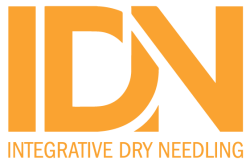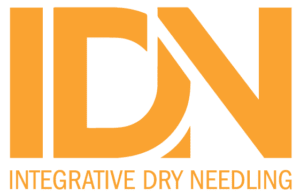Platelet-rich therapies for musculoskeletal soft tissue injuries.
Cochrane Database Syst Rev. 2013;12:CD010071
Authors: Moraes VY, Lenza M, Tamaoki MJ, Faloppa F, Belloti JC
Abstract
BACKGROUND: Platelet-rich therapies are being used increasingly in the treatment of musculoskeletal soft tissue injuries such as ligament, muscle and tendon tears and tendinopathies. These therapies can be used as the principal treatment or as an augmentation procedure (application after surgical repair or reconstruction). Platelet-rich therapies are produced by centrifuging a quantity of the patient’s own blood and extracting the active, platelet-rich, fraction. The platelet-rich fraction is applied to the injured tissue; for example, by injection. Platelets have the ability to produce several growth factors, so these therapies should enhance tissue healing. There is a need to assess whether this translates into clinical benefit.
OBJECTIVES: To assess the effects (benefits and harms) of platelet-rich therapies for treating musculoskeletal soft tissue injuries.
SEARCH METHODS: We searched the Cochrane Bone, Joint and Muscle Trauma Group Specialised Register (25 March 2013), the Cochrane Central Register of Controlled Trials (CENTRAL 2013 Issue 2), MEDLINE (1946 to March 2013), EMBASE (1980 to 2013 Week 12) and LILACS (1982 to March 2012). We also searched trial registers (to Week 2 2013) and conference abstracts (2005 to March 2012). No language or publication restrictions were applied.
SELECTION CRITERIA: We included randomised and quasi-randomised controlled trials that compared platelet-rich therapy with either placebo, autologous whole blood, dry needling or no platelet-rich therapy for people with acute or chronic musculoskeletal soft tissue injuries. Primary outcomes were functional status, pain and adverse effects.
DATA COLLECTION AND ANALYSIS: Two review authors independently extracted data and assessed each study’s risk of bias. Disagreement was resolved by discussion or by arbitration by a third author. We contacted trial authors for clarification of methods or missing data. Treatment effects were assessed using risk ratios for dichotomous data and mean differences (MD) or standardised mean differences (SMD) for continuous data, together with 95% confidence intervals. Where appropriate, data were pooled using the fixed-effect model for RR and MD, and the random-effects model for SMD. The quality of the evidence for each outcome was assessed using GRADE criteria.
MAIN RESULTS: We included data from 19 small single centre trials (17 randomised and two quasi-randomised; 1088 participants) that compared platelet-rich therapy with placebo, autologous whole blood, dry needling or no platelet-rich therapy. These trials covered eight clinical conditions: rotator cuff tears (arthroscopic repair) (six trials); shoulder impingement syndrome surgery (one trial); elbow epicondylitis (three trials); anterior cruciate ligament (ACL) reconstruction (four trials), ACL reconstruction (donor graft site application) (two trials), patellar tendinopathy (one trial), Achilles tendinopathy (one trial) and acute Achilles rupture surgical repair (one trial). We also grouped trials into ‘tendinopathies’ where platelet-rich therapy (PRT) injections were the main treatment (five trials), and surgical augmentation procedures where PRT was applied during surgery (14 trials). Trial participants were mainly male, except in trials including rotator cuff tears, and elbow and Achilles tendinopathies.Three trials were judged as being at low risk of bias; the other 16 were at high or unclear risk of bias relating to selection, detection, attrition or selective reporting, or combinations of these. The methods of preparing platelet-rich plasma (PRP) varied and lacked standardisation and quantification of the PRP applied to the patient.We were able to pool data for our primary outcomes (function, pain, adverse events) for a maximum of 11 trials and 45% of participants. The evidence for all primary outcomes was judged as being of very low quality.Data assessing function in the short term (up to three months) were pooled from five trials that assessed PRT in three clinical conditions and used four different measures. These showed no significant difference between PRT and control (SMD 0.24; 95% confidence interval (CI) -0.07 to 0.56; P value 0.13; I² = 35%; 273 participants; positive values favour PRT). Medium-term function data (at six months) were pooled from six trials that assessed PRT in five clinical conditions and used six different measures. These also showed no difference between groups (SMD 0.06; 95% CI -0.39 to 0.51; P value 0.79; I² = 64%; 262 participants). Long-term function data (at one year) were pooled from 10 trials that assessed PRT in five clinical conditions and used six different measures. These also showed no difference between groups (SMD 0.25, 95% CI -0.07 to 0.57; P value 0.12; I² = 66%; 484 participants). Although the 95% confidence intervals indicate the possibility of a slightly poorer outcome in the PRT group up to a moderate difference in favour of PRT at short- and long-term follow-up, these do not translate into clinically relevant differences.Data pooled from four trials that assessed PRT in three clinical conditions showed a small reduction in short-term pain in favour of PRT on a 10-point scale (MD -0.95, 95% CI -1.41 to -0.48; I² = 0%; 175 participants). The clinical significance of this result is marginal.Four trials reported adverse events; another seven trials reported an absence of adverse events. There was no difference between treatment groups in the numbers of participants with adverse effects (7/241 versus 5/245; RR 1.31, 95% CI 0.48 to 3.59; I² = 0%; 486 participants).In terms of individual conditions, we pooled heterogeneous data for long-term function from six trials of PRT application during rotator cuff tear surgery. This showed no statistically or clinically significant differences between the two groups (324 participants). Pooled data for short-term function for three elbow epicondylitis trials (179 participants) showed a statistically significant difference in favour of PRT, but the clinical significance of this finding is uncertain.The available evidence is insufficient to indicate whether the effects of PRT will differ importantly in individual clinical conditions.
AUTHORS’ CONCLUSIONS: Overall, and for the individual clinical conditions, there is currently insufficient evidence to support the use of PRT for treating musculoskeletal soft tissue injuries. Researchers contemplating RCTs should consider the coverage of currently ongoing trials when assessing the need for future RCTs on specific conditions. There is need for standardisation of PRP preparation methods.
PMID: 24363098 [PubMed – in process]



